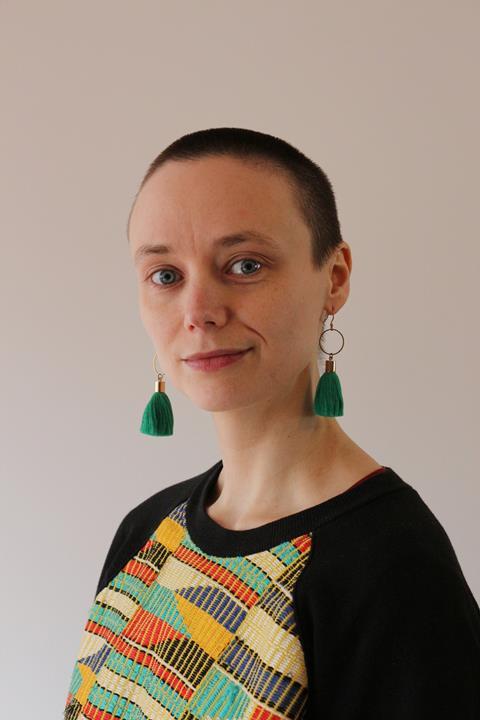RIBA and Architects Declare publish joint report ahead of COP26
The RIBA and Architects Declare have published a joint report ahead of COP26 demonstrating the critical role the sector must play in reducing greenhouse gas emissions.

The report’s authors – led by architect Maria Smith of Buro Happold – bring together research from across the industry and set out key recommendations to governments and colleagues.
These range from reporting emissions on a consumption basis to adapting building codes to support the decarbonisation of buildings.
The report, Built for the Environment, said: “Worryingly, only 20% of countries include building energy codes as part of their Nationally Determined Contributions [NDCs – countries’ commitments to reducing their emissions].
“However, well-designed regulations can promote innovation, allowing us to achieve broader social, economic, and environmental goals.”
These should go hand-in-hand with policy changes to planning systems, public procurement, grants, incentives and enabling infrastructure, it said.
“The built environment is central to our quality of life. With greater emphasis in government policy, it can become a central partner in addressing the climate and biodiversity emergencies.”
The 78-page report also calls for far more retrofit, for the decarbonisation of materials and products and for a reduction in the energy required to operate buildings. It points out that while the industry can deliver low- or zero-energy buildings, 28% of global energy-related greenhouse gas emissions are currently caused by heating, cooling and operating buildings.
Smith, a RIBA councillor and director of sustainability at Buro Happold, said: “This report is a call for governments across the world to include built environment actions in their net zero plans.
“The built environment sector can be a transformative force in meeting the challenges of the climate and biodiversity emergency.
“The knowledge, tools, and skills exist, but support and infrastructure is needed to mainstream best practice and bring about the transition to a fair and sustainable built environment for all.”
The report trails a two-day virtual Built Environment Summit next month that will provide an opportunity for the sector to unite ahead of COP26, which new RIBA president Simon Allford said was essential.
“Industry and governments need to work together to accelerate the global decarbonisation of buildings,” he added.
“I encourage the entire sector to endorse and amplify the report’s recommendations – we must speak with one voice to deliver a clear and urgent message.”
Built for the Environment: The recommendations
• Governments to ensure environmental targets are science-based and fair – this means reporting greenhouse gas emissions on a consumption-basis, and including built environment actions and all sources of emissions within net zero plans (including NDCs).
• Governments to shift focus onto reducing absolute emissions, as opposed to reductions per square meter of building area, or per person. Greenwashing or reliance on large offsets will not help us meet our collective goals.
• Governments must both mitigate and adapt to the climate and biodiversity emergencies. Nature-based solutions and traditional ecological knowledge, wisdom and technologies are central to both.
• Those operating within the built environment to actively adapt practice. From breaking down silos between disciplines and competencies, to communicating and sharing information, to shifting cultural ideas of beauty and design, the entire sector must adapt.
• Information to be openly and widely shared to enable collaboration and transparent decision-making. This includes information around land, buildings, ecosystems, and infrastructure, as well as knowledge and skills.
• Social justice to remain at the heart of all action. This means involving those impacted by change in decision-making, and together designing social policies to facilitate a transition to a fair and sustainable built environment, taking steps to ensure unintended negative consequences are addressed quickly and fairly.
>> From the archive: Maria Smith: Imagine a future where we don’t have to choose between economy and ecology

Case study: Mayfield, Manchester: delivering a new urban neighbourhood
The Mayfield project in Manchester recognises the potential of existing environmental assets on an urban site to yield meaningful environmental benefits. The park will deliver a 90% net gain in biodiversity including 28 specific habitat features for protected and priority species, including bat boxes, bird boxes and invertebrate refuges.
U&I is working with Studio Egret West, Allford Hall Monaghan Morris, and Buro Happold to restore degraded ecosystems to improve the resilience of human habitats against climate change with nature-based solutions.
Doing so will also improve the resilience of non-human habitats and the species that depend on them by providing new food sources, resting places, and connections, all within a major city.
The project exploits bioengineering techniques to manage natural flooding. It proposes to partially remove existing brick-built river walls to allow riparian species to be re-introduced to this stretch of the river. Also, artificially high levels along the river will be lowered in places to allow flooding during high rainfall events, creating a ‘wildscape’ area that mitigates the impact of flooding more successfully.
Planting with native species, and providing habitat features for wildlife will create attractive, multifunctional spaces for people and wildlife. The large new area of green space and opening up the river will help to reduce the urban heat island effect. Overall, the new park will be an important resource for the local community by increasing access to nature within an otherwise densely developed part of the city.
Postscript
The report can be downloaded from and endorsed on the RIBA website
















1 Readers' comment